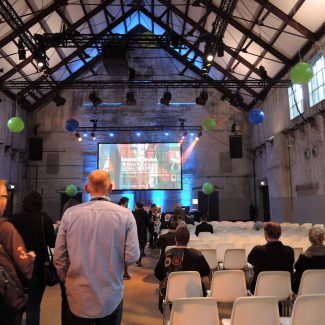The 9th annual Service Design Global Conference was held from Oct. 27 to 28 in Amsterdam, celebrating its return to the city where it was first held. From Infield Design Keiko attended the conference, between a variety of attendees from freelancers to enterprises, public sectors to academics. The total number was said to have reached 650, and there was also a considerable number of people from Japan.
The first keynote speaker, a designer from BMW, drew a very simple but clear picture of the changes taking place in his industry. “The automobile, an object of emotional attachment in the past, is becoming more and more a simple device to travel. In the future the paradigm will change completely, and it will become a mechanism with which to deliver a service.”
Another speaker who made the last presentation of the same day spoke from the exact opposite viewpoint, which kind of complemented the picture for me.
Coming from the famous navigation company in Amsterdam, TomTom, he noted that while software may be easy, “hardware is really hard” as in the title of his presentation. He emphasized that in an age when every function seems to be replaceable by a smartphone app, having a tangible product will be a great power in delivering a strong user experience, providing something the user can relate to, producing emotional attachment and brand loyalty.
While the term service design often seems to draw attention mainly to systems and stories, shouldn’t there be a creation of new values in the design of tangible products — from a service design (or experience design) point of view?
